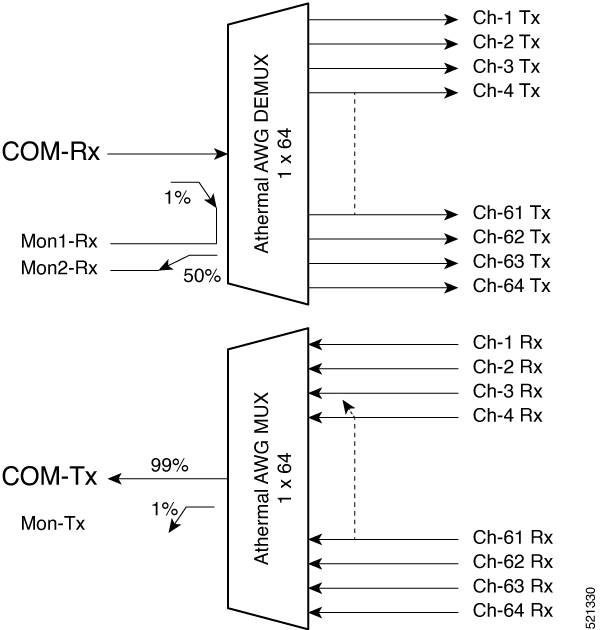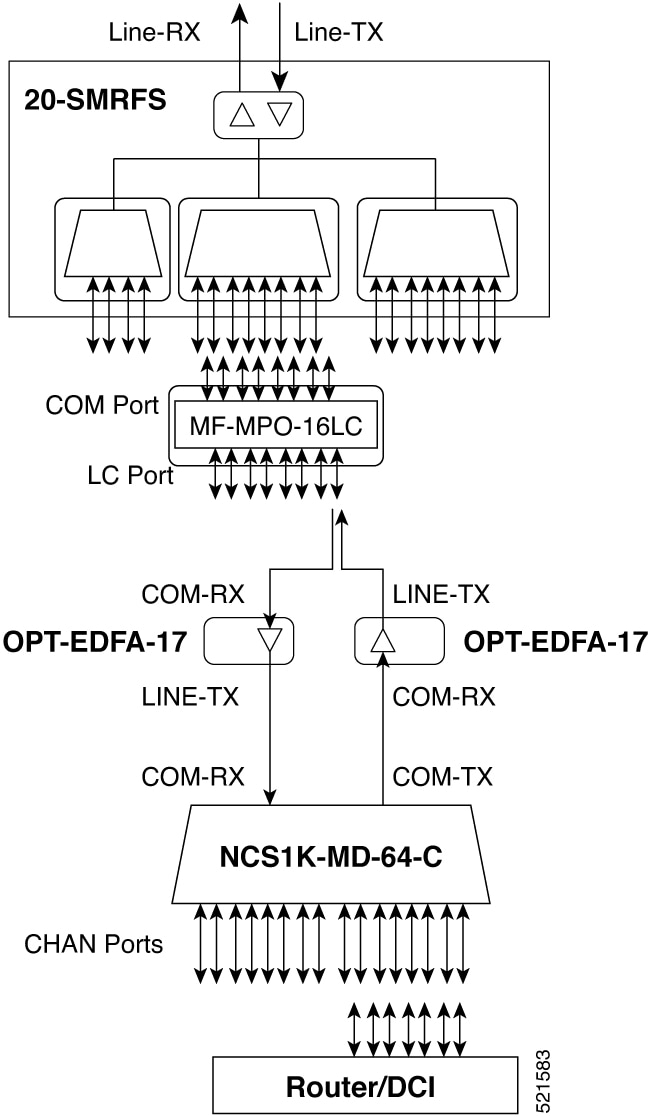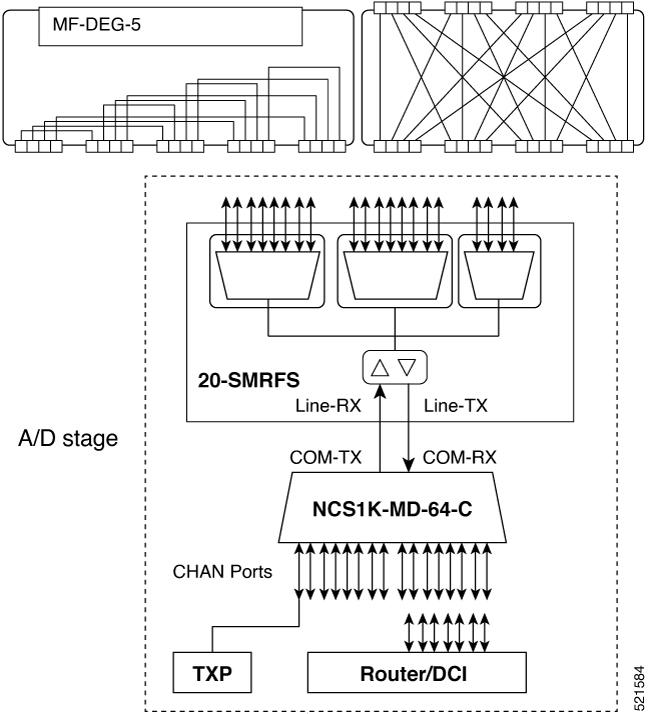Understanding NCS1K-MD-64-C
A new optical passive optical multiplexer and de-multiplexer module, NCS1K-MD-64-C, is introduced in Cisco NCS 2000 Series R12.1 and in Cisco NCS 1000 Series R7.3.1. The new optical module is based on Athermal Wave Guide (AWG) providing 64 channels at 75-GHz space covering the extended C-band of optical spectrum. The passive module allows you to transmit 400G ZR and 400G ZR+ wavelengths.
NCS1K-MD-64-C is a bidirectional unit that have the MUX and the DEMUX functions implemented as two different sections. This module fits into ETSI 300 mm and ANSI 450 mm racks.
Mutiplexer
-
64 Channels AWG combines the signal coming from Chi-RX ports into the aggregated COM-TX port.
-
An integrated tap-coupler splits 1% of the aggregated signals toward MON-TX port for monitoring.
Demutiplexer
-
An integrated tap-coupler splits 1% of the aggregated signals coming from COM-RX port toward MON-TX port for monitoring.
-
64 Channels AWG splits the aggregated signals into individual Chi-TX ports.









 Feedback
Feedback